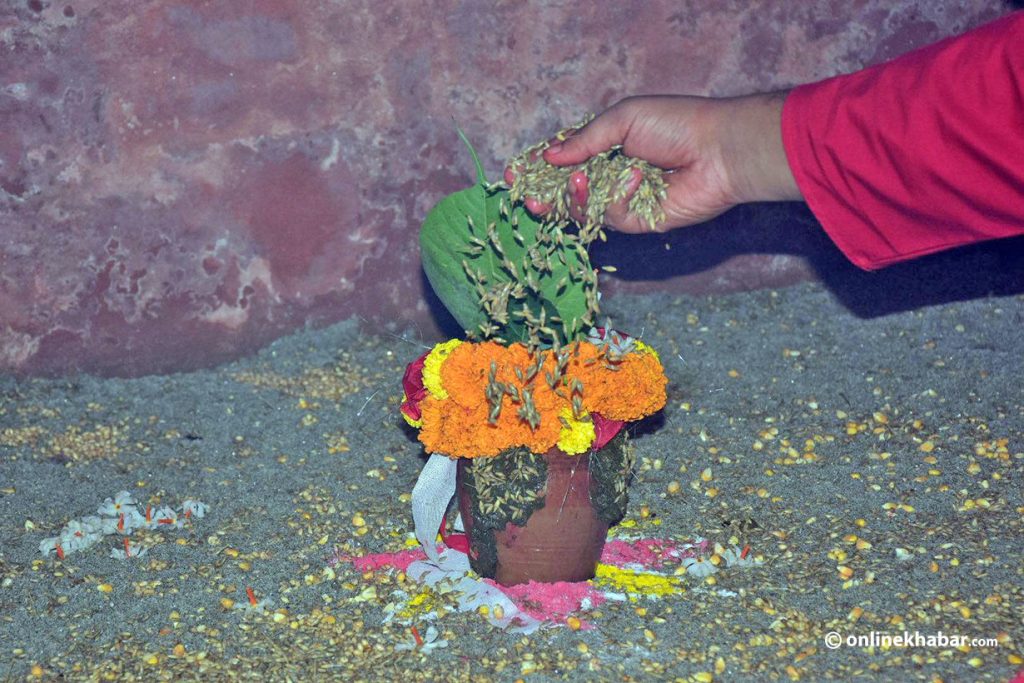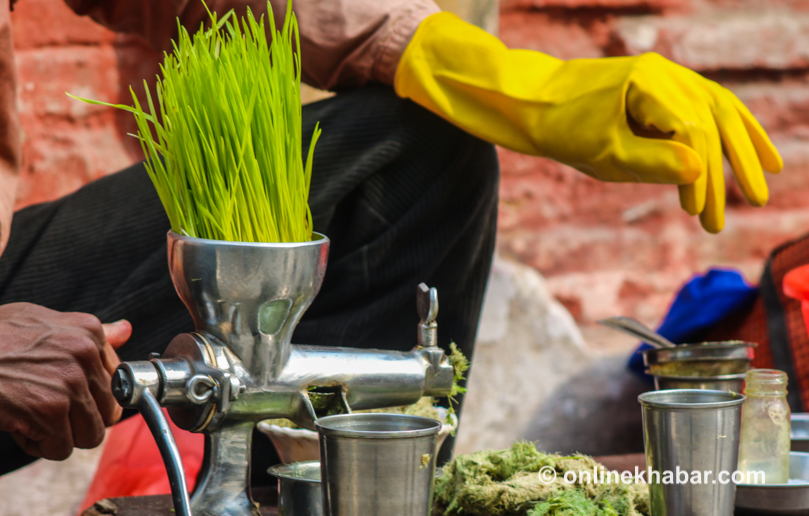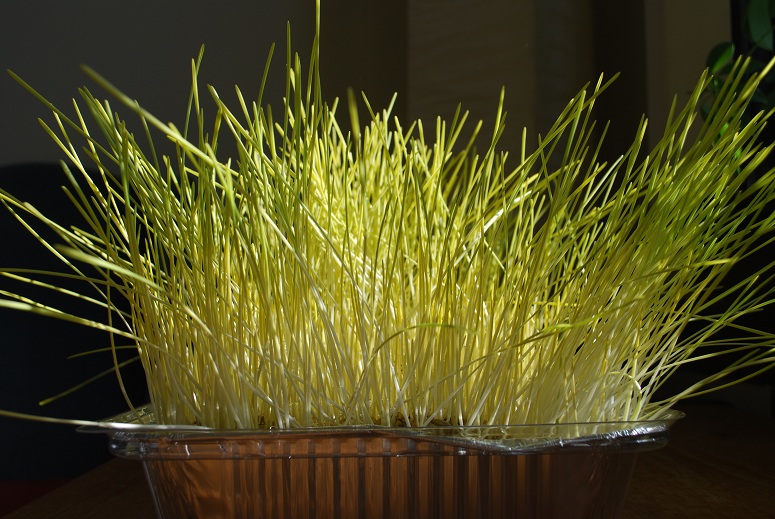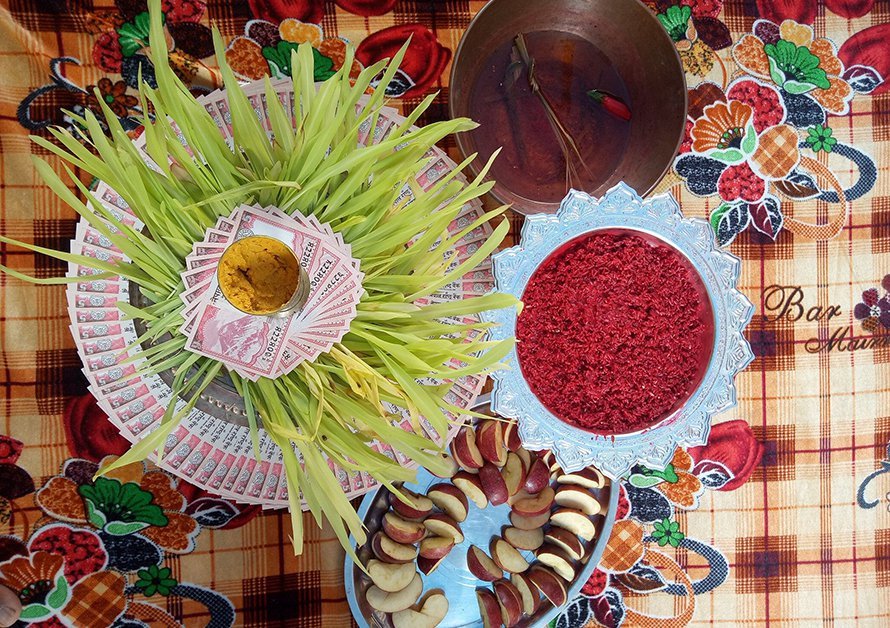
When Dashain comes, people are excited to get the red tika, jamara, blessings and dakshina from their elders. But, as you wait for your turn to take the tika from your elders, have you ever wondered why people use the green/yellow jamara on Dashain? The red tika of vermillion and rice grain tika are common in other festivals too, but why do they specifically use jamara and not any other flowers for Dashain?
Here we explain a few things to know about jamara that people wear during their favourite festival of the year.
1. Why barley?
Before you get into the nitty-gritty of the jamara, let us tell you where the word comes from. Jamara comes from Sanskrit and is said to be a derivation of the word “yawara”. Its golden colour is taken as the symbol of victory [of goddess Durga].
Barley is considered to be the king of grains in mythological texts. In the Puranas, Lord Krishna also said that barley is medicinal, adding religious significance. In the Vedic texts, jau (barley ) is considered useful to cure diseases, gives one strength and increases their vitality. This is the reason why barley is used in large quantities in any yagya, a holy fire built in cultural events.
From the point of view of food, barley is a nutritious substance, and from the point of view of health, it is also considered a form of medicine.

2. What’s its auspiciousness?
As the kalash that you establish on Ghatasthapana represents Lord Durga, the barley planted on that kalash also gains a holy essence. When the jamara is taken out on the 10th day (Dashami/ Bijaya Dashami/Tika), it is considered the holy grass.
In some nine days, the barley seed grows up to five or six inches in length by the time of tika. Taking jamara is important for respect, honour, love, affection, joy, and beauty.
Hence, there is an understanding that the traditional practice of wearing jamara is a symbol of prosperity.
As it is also the kind of seed that can be grown anywhere in the country, whether it is the mountains, hills, or Terai, using jamara also made sense and it has worked as a symbol of unspoken unity.
3. Are there health benefits?

While there has not been precise research done on the health benefits of jamara, sprouting has been considered the best way to prepare grains. Compared to other green vegetables, the nutrients found in barley or its sprouts are comparatively much higher. It not only activates the enzymes inside the grain but also improves the amino acid and vitamins.
Jamara juice is also used as a medicine for health problems including skin, liver, blood-related problems, fever, blood pressure, blood sugar, wounds, and injuries. If you drink the juice for seven or nine days daily, it apparently has some health benefits.
The dietary benefits of barley sprouts include less cholesterol and more antioxidants because of their fibre. They also control blood pressure, and blood sugar and detoxify your blood. They have good bacteria so they better your digestion and give your body high levels of Vitamin A, C, calcium, phosphorus and magnesium. They are also low in calories so they are a healthy weight loss diet and improve your bowel movement.
4. How are jamaras grown?
You need:
- A tray or a container
- A mixture of sand or soil
- Barley seeds
- Water
When you have what you need, here are a few tips to do:
- Soak the barley seeds for an entire night
- Lay out sand or soil or their mixture
- Drain the water from the seeds
- Place the seeds in the mixture
- Sprinkle water every day

5. Are there variations too?
While most people use barley seeds for jamara, some communities/families also use rice, wheat or corn or any kind of mixture of the seeds. It was only barley at first, but with the invention of new grains or when barley harvest started to decrease, people started using wheat or corn plants are also used as seeds.
Many people use traditional sal leaf plates (taparis) or earthenware to grow them.
6. Which colour do you like?
Jamaras to accompany the Dashain tika are supposed to be yellowish, but barley sprouts in the field are green. How is it so?
Field shoots get their colour from a chemical called chlorophyll. So when it lacks chlorophyll, it gets a yellowish colour. To activate the plastids in the chlorophyll, the plants require sunlight. So, as the Dashain jamaras grow in the dark, these plastids have no chlorophyll and turn yellowish.
This means the colour depends on how much light the sprouts receive.

Originally published on October 24, 2023.


















